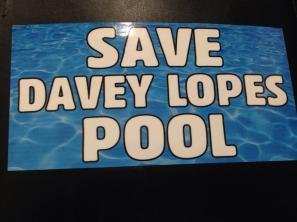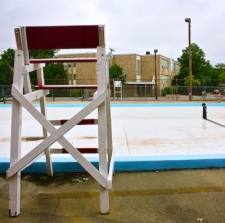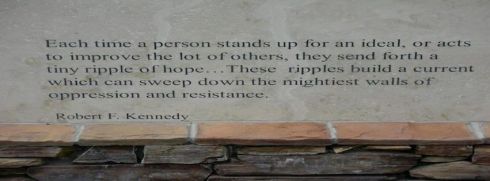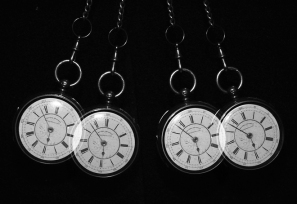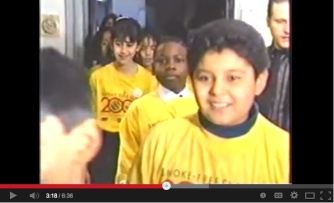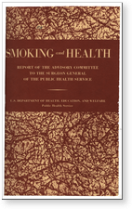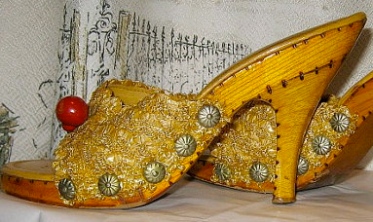Heat. Water. Poverty. Children. Bureaucracy. Politics. Convening like a perfect storm in the summer of 2013. A community pool was empty. In the heart of the inner city of Providence. More than empty, it was riddled with damage. Rusted and old and hot, the sun reflecting off its chipped and peeling white paint. A pool shouldn’t be hot. It should be an oasis. This one had a history of being more than an oasis. It was a lifesaver. A veritable lifesaver to children who had nowhere to go in the heat of the summer. Adults remembered learning the lifelong, lifesaving, skill of swimming. For others it was a diving board out to a pretty cool life of success.
Last summer, in the throes of heat and humidity, the absurdity of the situation steamed to a flashpoint. Open the pool. Fix the pool. When would it be done? A poor neighborhood with small children who wanted to swim in the heat of the summer waited. And then the answer came – it would not be opened. It would be destroyed by a city administration hellbent to make a “cement pond” (to paraphrase Ellie Mae Clampett) out of the whole thing. Maybe make a water “park”, with little fountains spraying up out of concrete. Or, as one radio talk show host said – let’s watch the kids get their crotches spritzed instead of learning how to swim.
It seemed like an outrageous injustice that would bring so such negative press that surely the administration would see the error of their ways and reverse themselves – maybe even throw a pool party to prove their mea culpas – and ‘what were we thinkings’. But alas, the wingtips of a politician, and maybe more than one, who all should have known better started to grind into the sand. The more the people asked ‘why’, the louder the silence from the brick office space became. A grinding, seething silence that grew deeper each day. The incredulity of it all was shocking – almost to a one.
Figuring out the ‘why’ is usually what happens next. But there was no time – there was no time. Cement trucks were hovering in the dark people thought. They might have been.
What happened next happened without plan, yet it was exquisitely executed. It did not involve parading young sweating children out to beg for their pool. The tactic was a classic disruptive model for change. For those visual learners, here is a graphic to illustrate the paradigm. (Credit here to Ted Santos, CEO of Turnaround Investment Partners). What happened could have been planned out but it wasn’t. It happened by instinct, and was fueled by expediency – and the injustice of it all.
People began to talk – each coming from their own perspectives and interests. There were advocates for the black community, one coming with a historical perspective who began to organize under the banner of Swim Empowerment. He even put his own money towards a comprehensive study of why many African-American children and adults do not know how to swim as compared to their white neighbors. He held a community meeting. More people came and talked. The director of the department of health attended and shook his head. Local legislators came. Swim professionals from the “Y” and coaches got involved. All establishing the bottom of an effective disruptive change pyramid – people with integrity, responsibility and accountability.
Social media began to flicker as social media does. The conversations rose to a din. The din rose to outrage. People felt passionate and didn’t hesitate to say it. A “Save the Pool” page on Facebook was born and hashtags developed. A solid core of people were “in” – they were a committed core, giving this life. The next tier – commitment.
The engagement of a local talk show host quickly won an ally to the cause. Daily he raged on and on, and was joined by others – demanding the official who was ultimately responsible return his calls. No return calls. Silence. More talk show chatter. Support came as a gushing splash, spurred on by the silence from the hot brick building downtown. The community had taken its stand. (see tier 3 of our pyramid).
Compromises began to be discussed. “How about filling in part of the pool so it wasn’t deep enough to dive in?” No, the group said. You can’t learn how to swim in a wading pool. “No money to fix the pool.” Legislators and contractors and community leaders rose up and said – we’ll fix it for free. “We need to study this whole thing.” “And, oh, by the way, we’re going to fill in the other pools in the city.” By now it was clear the short summer season was passing by. Don’t touch the other pools, the group said, not to everyone’s agreement – but if you don’t touch them, we’ll agree to a [dreaded] commission to “study this”. The goal was clear – the only purpose of the commission was to get the pool open for 2014. We will “study” how we will do this, but we WILL do it. A declaration was made.
Early in the process – the action step – began. The pool would reopen. Not to be fooled again – and recognizing the devilish details, questions were asked – when, where, how, who. Pressure. More pressure. July 1st. The pool will be repaired and it will open on July 1st.
Construction began this June, and it was watched diligently, for any possible delays. In the last week of June, the repairs were completed. The water flowed into the pool. And it waits now – warming up – for its debut as this community’s oasis.
It will open tomorrow with a press conference. This year, the talk of making more water parks or cementing in of deep ends is gone – the whole crazy no-pools issue has had a complete breakdown. There is talk of swim lessons. Around the city. And BBQs for families around the pool. There have been no apologies or explanations – still silence. There will be a lot of people to thank, but for fear of omitting, perhaps it’s best to say this: the story is about the kids smiling, happy to be swimming in the pool, not about the politicos who will want to claim victory or credit in a big splash. Not about any one person really.
This spontaneous, informal, beautifully executed disruptive model – one where people risked possible retaliation, their jobs and votes – bolstered by historical data and facts – spurred on by the urgency of it all and permanency of any failure – with its effective use of the raising of voices and the disruptive media of talk radio and digital news – what can we learn from this stunning success? I don’t propose an answer, but I do pose the question – and I think we should pose it more often.
It is said – “The Disruptive Leadership Model™ empowers organizations to purposefully reach that point which is outside of the business as usual current instead of depending on hope and luck. It is a very effective model for empowering people and organizations to responsibly come out of a comfort zone and produce results that would have never occurred in the paradigm of business as usual. In fact, most breakthroughs change the future of the person or company [or organization] forever,” – Ted Santos.
In this year that has witnessed the loss of Maya Angelou and before that, of Nelson Mandela – what causes speak to you? What change do you want to see? Make a little noise. Tweet a louder tweet. There are great tools today to bring disruption into very staid systems. Think less about the same ol’ way of doing things if you want to see big change in this, your, lifetime.
Try being more disruptive. Once you dive into that pool and you learn how to swim – you might very well have changed your own future – and society will be the better for it.
